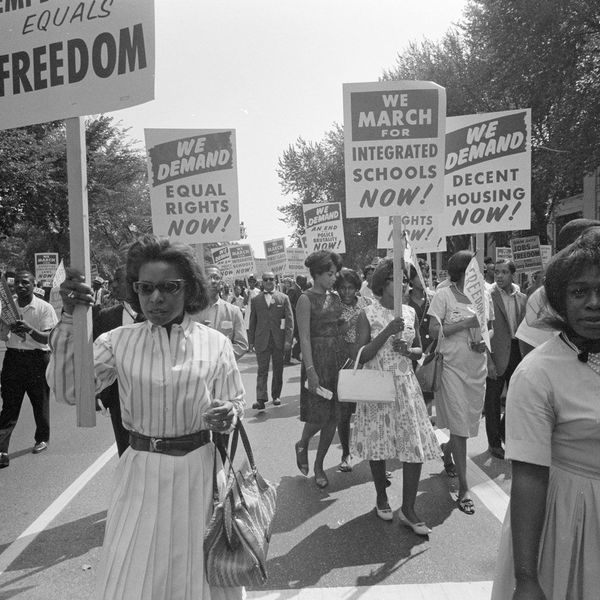Powerful Social Movement
The Civil Rights Movement was a powerful social movement that focus on equality, justice, and a means of power for those whose rights were constantly being violated. These racial groups fought for many years in which sometimes their strategies were not as effective as others, but they caused enough noise to get the attention required to bring awareness on the injustices brought upon their people. Although, some of their fights were similar to one another they also differed from one racial group to another. From violent to non-violent approaches Native-Americans, African-Americans, Chicanos, and Chinese-Americans fought long and hard to get their voices heard.
After decades of racist policies and unbelievable amount of inequalities against American Indians one of the primary organizations that took action in the calling for Native-Americans rights was an organization called the American Indian Movement (AIM). According to Columbia Electronic Encyclopedia, the American Indian Movement was a Native-American civil-rights activist organization, founded in 1968 to encourage self-determination among Native Americans and to establish international recognition of their treaty rights. Although, the organizations main purpose was to acquire justice and equality among their people their strategies were not the most peaceful.
American Indian Movement
For example, in the article May 8, 1973: American Indian Movement surrenders at Wounded Knee after 71-day standoff, by the author Allen Pusey states, “On Feb. 27, 1973, a well-armed cadre of 200 activists marched into Wounded Knee and announced to 11 residents that the hamlet was now under the occupation of AIM. Within hours, Wounded Knee was surrounded by a formidable force of federal marshals and FBI agents, equipped with armored military vehicles and aerial support from the Nebraska National Guard”. This incident brought seventy-one days of on and off sniper attacks, gun fire and occasional failed negotiations between AIM and the FBI with the end result of wounding two federal agents by gunfire one becoming paralyzed and two protesters being killed (Pusey). Although, AIM strategy utilized in this siege was not the most effective it brought mass of media attention, which awaken many Americans to the problem Native-American were facing. This organization as stated in the article, The Hounding of Dennis Banks, by the author Contance Mattiessen that, “it played a role in the movement’s most controversial activities, participating in the 1969 occupation of Alcatraz and the 1972 takeover of the Bureau of Indian Affairs headquarters in Washington,” showing AIM takeovers were noticeably violent. Although, some seemed to be unprompted outcomes of protest gatherings, others included armed seizure of public facilities.
Chinese-Americans
A racial group that also underwent discrimination and prejudice where Chinese-Americans. They too were victims of existing racism and had been excluded from mainstream society who used different types of methods to fight for their rights. The book, The Making of Asian America through Political Participation, which maps the actions and strategies of Asian Americans as they negotiate a space in the America political arena by the author Pei-te Lien, an Associate Professor of Political Science and Ethnic Studies at the University of Utah explains, “They used a variety of political strategies from active resistance to accommodation, of tactics from protest to litigation, and styles encompassing both the left and the right ends of the political spectrum,” (42). In the late 60s a group of college students mostly American Chinese and Japanese, but also included other Asian ethnicities, had their first major attempt for political alliance by protesting against racist killing in the Vietnam War and the mistreatment of the Third World people (50). The formation of various Asian organizations began to develop with these student protest that were calling for racial justice among their people. Lien states, “The initial phase of the Asian American Movement resulted from a convergence of sociodemographic changes inside the community…these participants came of age in the Civil Rights Era; sensitized to issues of race inequality, and the colonial exploitation and subordination of people in Asia…,” (51). As Chicanos Asian-Americans also believed in the importance of getting a good and fair education

